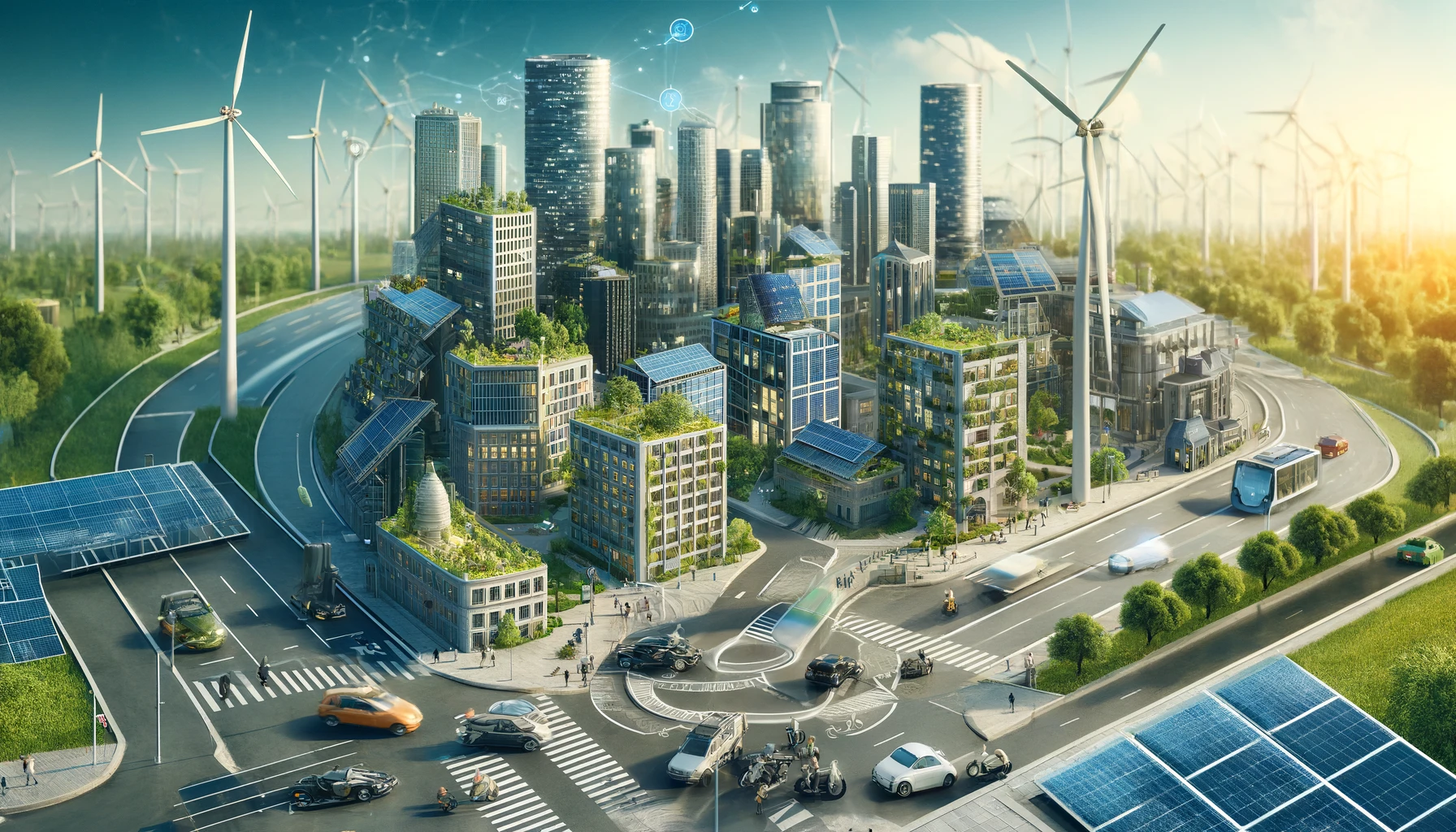The shift towards renewable energy is no longer just an option but a necessity as we confront the escalating challenges of climate change and resource depletion. The future of renewable energy technology promises not only to transform how we generate and consume energy but also to redefine our approach to environmental stewardship and economic sustainability. This comprehensive guide explores the latest advancements and future potential of renewable energy technologies, framed within the context of global energy needs in 2024 and beyond.
The Evolution of Solar Energy
Solar power continues to lead the renewable energy charge, driven by innovations that improve efficiency and accessibility.
Next-Generation Photovoltaics:
- Perovskite Cells: These offer potential for higher efficiencies and lower manufacturing costs than traditional silicon-based cells.
- Bifacial Solar Panels: Capable of absorbing light from both sides, these panels significantly increase energy generation capacity.
Integration into Infrastructure:
- Solar Roads: While still in experimental stages, solar roads are being tested for their ability to generate electricity while supporting vehicular traffic.
- Building-Integrated Photovoltaics (BIPV): These systems integrate photovoltaics into the building material itself, such as windows or facades, seamlessly blending energy generation with architectural aesthetics.
The Advancement of Wind Energy
Wind energy is evolving with technology that enables higher power generation and operational efficiency.
Innovative Turbine Designs:
- Vertical Axis Wind Turbines (VAWTs): These turbines are suitable for urban environments as they can capture wind from any direction.
- High-Altitude Wind Energy: Using kites or tethered drones, these systems harness winds at higher altitudes where they are stronger and more consistent.
Offshore Wind Expansion:
- Floating Platforms: These allow turbines to be installed in deeper waters, vastly increasing the available locations for offshore wind farms.
- Larger Turbine Capacity: Advances in materials science are enabling the construction of larger, more efficient turbines.
Harnessing the Power of Water: Hydropower and Beyond
Hydropower remains a cornerstone of renewable energy but is expanding to include less traditional forms.
Innovations in Hydropower:
- Pumped Storage Hydropower: Acts as a giant battery by storing excess energy and releasing it when demand is high.
- Kinetic Hydro Turbines: These can generate electricity from the flow of rivers without the need for large dams.
Emerging Marine Technologies:
- Tidal Power: Utilizes the predictable movement of tidal waters.
- Wave Energy Converters: Harness the kinetic energy of surface waves or the pressure fluctuations beneath.
Geothermal and Bioenergy: Untapped Potential
Exploring less common but highly promising energy sources offers a glimpse into a diversified energy future.
Geothermal Energy:
- Enhanced Geothermal Systems (EGS): These systems drill deeper into the Earth’s crust to access heat resources in areas without natural geothermal heat.
- Direct Use Applications: Using geothermal energy directly for heating or cooling can significantly reduce reliance on traditional energy sources.
Bioenergy Innovations:
- Biogas: Upgraded biogas can be injected into natural gas networks.
- Bioenergy with Carbon Capture and Storage (BECCS): This technology captures CO2 from bioenergy processes, storing it underground to reduce atmospheric CO2 levels.

Integration Challenges and Solutions
Integrating these diverse energy sources into the existing grid presents challenges but also opportunities for innovation.
Smart Grid Technology:
- Energy Management Systems: These systems use AI to predict and manage energy flow, optimizing renewable energy usage.
- Grid Adaptability: Modern grids are being designed to handle the variable outputs from renewable sources more efficiently.
Energy Storage Solutions:
- Battery Innovations: Developments in battery technology, such as solid-state and flow batteries, offer longer life spans and higher capacities.
- Seasonal Storage Solutions: Technologies like hydrogen storage could provide solutions for long-term energy storage, bridging gaps in seasonal energy production.
Conclusion
The future of renewable energy tech is vibrant and filled with potential. As we delve deeper into this era of innovation, the key will be not only advancing technology but also integrating these solutions into a cohesive, sustainable energy system that supports global environmental goals and promotes economic stability.

